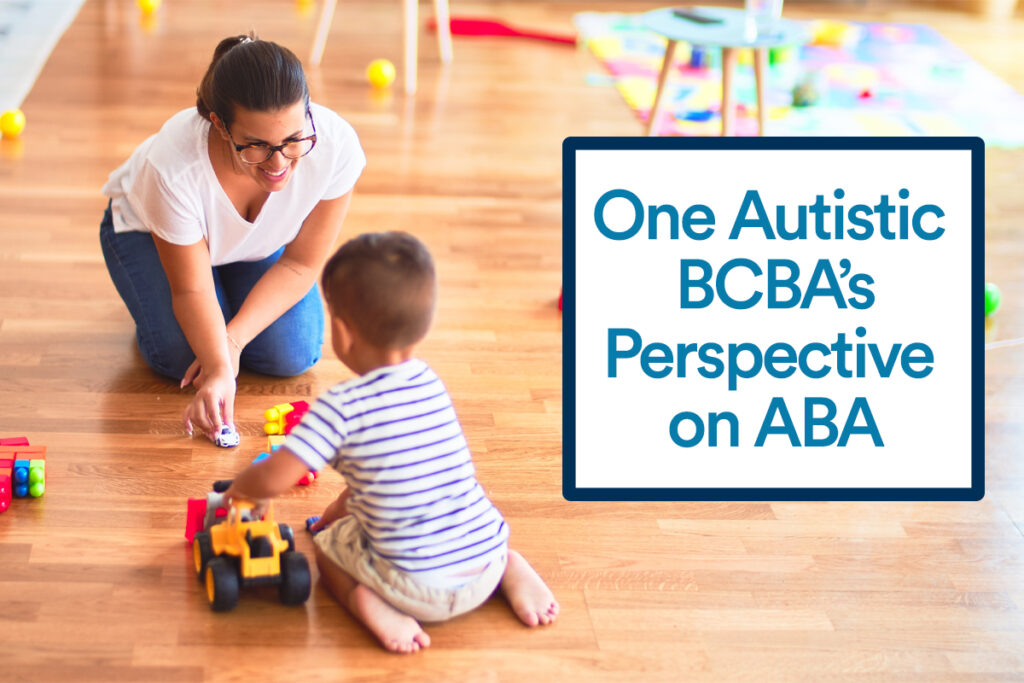By: Michelle Zeman, MA, BCBA

Board Certified Behavior Analysts (BCBAs) often work with the Autistic community. However, you may not often run into an Autistic BCBA. There are Autistic BCBAs who support and have a career in Applied Behavior Analysis (ABA), and as one I would like to share my perspective.
This field gets a bad reputation for many reasons. It’s claimed that ABA “masks Autistic behaviors” as well as “teaches children to be robots”. I hate the reputation that proceeds today’s ABA; however, if you look back at how ABA was conducted in the 1960s, there’s enough rationale to support. We must condemn the actions of rigid and uncompromising ABA while changing current stands, as I attempt to do in my practice. Therefore, my perception of ABA is taken into 3 points: (1) using a trauma-informed lens, (2) actively listening and validating our clients, (3) individualizing care.
- When we use a trauma-informed lens, it means that we are not just looking at behaviors from the 4 functions. Rather, we look at behaviors that happened because of traumatic experiences. In my own life, I got into a car accident when I was 16 years old. I was already semi-emotional, and I was driving in the rain (it was sprinkling). I was turning left at a green light and overcorrected, thus hitting another car. I was so traumatized by the experience that I couldn’t stand the thought of going behind the wheel for 4 years. What motivated me to get behind the wheel again was the fact that I was sick and tired of my mom and my friends having to drive me around. If anyone would have forced me to comply by making me drive from place to place, there’s a not insignificant chance that another car accident would take place. Likewise, when we force clients to attempt things they are not ready for, we risk traumatizing them.
- Active listening and validating our clients, as well as their caregivers, is vital in this field. Practitioners are not always right (even Autistic ones!), and we must approach in situation with humility and compassion. RBTs implement ABA therapy at their full ABA therapy hours. BCBAs go out anywhere between 5 and 20% of an RBT’s direct therapy hours per month. Then, we have our caregivers, who are with the client when we are not. When emphasizing compliance over collaboration, active listening and validation is thrown to the wayside. We have many elements that we must consider when implementing services, such as trauma, culture, environment, and feasibility of interventions. If we run into issues, we accommodate while doing our due diligence.
- Perhaps the third point is the most important – individualizing care. When I was a Clinical Director, I was strict when report reviews. However, I was strict because I wanted to make my analysts place themselves in their client’s shoes. For instance, I have seen vocal and motor stereotypy in several reports with a function of automatic reinforcement. Granted, each of these behaviors are different across each client we work with, but I still ask for rationale for how these behaviors are socially significant to reduce. If I notice the rationale does not fit the criteria, I will say “remove this behavior as it is not socially significant, does not impede the client’s ability to access contingencies, and it is not harmful to themselves or others”. I’ve also had clients ask me to write in specific goals they want to work on in their treatment plans too – for instance, I had a client who told me “Michelle, I want to work on becoming organized.” I wrote in a goal that fit the medical necessity model, but also targeted what the client wanted to work on.
These 3 areas have shaped me into the BCBA that I strive to be. Though I am one Autistic human being, I strive to ensure that I can be a compassionate practitioner. That’s what our clients deserve.
About the Author:
Michelle Zeman, MA, BCBA is an Autistic Board Certified Behavior Analyst based out of Orlando, FL. She has been in the field since 2013, and a BCBA since 2016. She has worked with Autistic clients between ages 2-17, providing client-centered, trauma-informed, and compassionate care to all families. Michelle has worked in-home, in school, in center, and in the community with clients to help achieve her clients’ goals. In her free time, Michelle likes to spend time with her two pugs (Milo and George), ride rollercoasters, go to drag shows, and binge watch RuPaul’s Drag Race.
